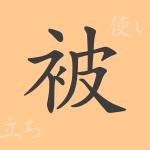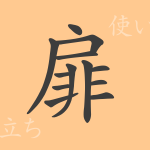In the Japanese language, there are numerous kanji (Chinese characters), each with its own unique history and meaning. This time, we focus on the kanji “悲” (hi). This single character has the power to express deep emotions and plays an important role in Japanese culture. In this article, we will delve into the origins of “悲” (hi), its modern usage, and even the idioms and phrases that use this kanji, exploring its full scope.
The Origin of “悲” (hi)
The kanji “悲” (hi) is a character that originated from ancient China, and its formation is highly symbolic. “悲” (hi) is composed of “非” (hi), which means negation or mistake, and “心” (shin), which represents the heart or emotions. Therefore, “悲” (hi) signifies a state of pain or sorrow caused by some reason, rather than the original state of the heart.
The Meaning and Usage of “悲” (hi)
“悲” (hi) is a kanji that expresses emotions such as sadness and pity, or events and situations that evoke such feelings. In terms of usage, it is commonly used in words like “悲劇” (higeki, tragedy) or “悲哀” (hiai, deep sorrow) to express profound sadness or sympathy. It is also used metaphorically in contexts such as “悲惨な結果” (hisan na kekka, disastrous result).
Reading, Stroke Count, and Radical of “悲” (hi)
“悲” (hi) has multiple readings in Japanese, but it is mainly read as follows:
- Reading: In On’yomi (音読み), it is read as “ヒ” (hi); in Kun’yomi (訓読み), it is read as “かな.しい” (kana.shii) or “かな.しむ” (kana.shimu).
- Stroke count: It has a total of 12 strokes.
- Radical: The radical is 心部 (shinbu), which is the heart radical.
Idioms, Phrases, and Proverbs Using “悲” (hi) and Their Meanings
There are numerous idioms, phrases, and proverbs in Japanese that include the kanji “悲” (hi). Here are some examples:
- 悲観 (hikan): Viewing things with sadness or pessimism.
- 悲哀 (hiai): Deep sorrow or pity.
- 悲劇 (higeki): An event accompanied by deep sadness or misfortune.
- 悲報 (hihou): Sad news.
- 悲喜交々 (hikikomogomo): A mix of joy and sorrow.
Summary of “悲” (hi)
The kanji “悲” (hi) has been used since ancient times as a symbol of the complexity of human emotions. Its usage is diverse in both literature and everyday conversation, continuing to live within our language. As a kanji that expresses the richness of emotions, “悲” (hi) is an essential element in conveying the beauty of the Japanese language. Through this article, we hope you understand the deep meaning and background of “悲” (hi) and feel a richer world of words.

























